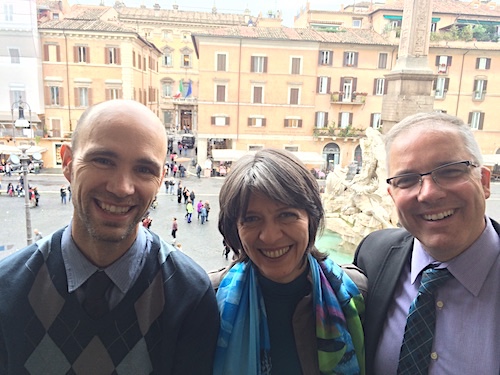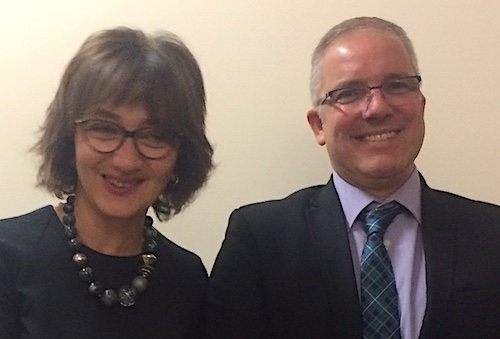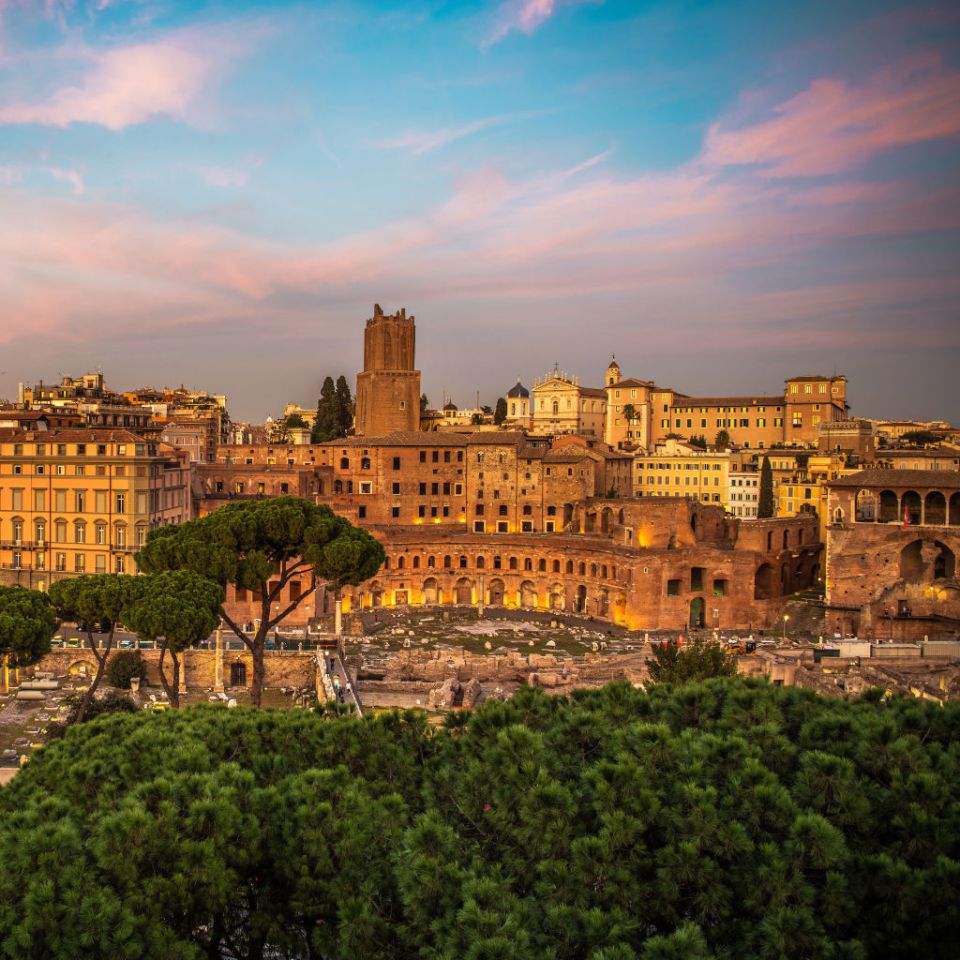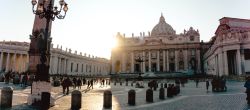Anglican Church
And doors open! But not the ones we expected! First, the Anglican Church. The team decides to visit the "chaplain" of the All Saints Church, Jonathan Boardman. The latter warmly welcomes them and says that he is aware of this project because Olivier Fleury's book was presented the night before at the "Churches together" meeting that unites the various Anglophone churches of Rome: Anglican, Catholic, Presbyterian, Protestant.
Here are some of his comments: "I totally agree with this project. It's good to plan well in advance.”
“It's a big call, especially for the youth. I was in Rome in 2000, but the millennium celebration was an event that focused on the Catholic Church. I am very interested in this project, which focuses on unity. Joint preparation is more important than the event itself."
He encouraged us to contact the bishop of the diocese to present the project at the Synod in Cologne in June. In the near future, he advises us to go to the Anglican center of Rome, attend the weekly Eucharistic celebration, and meet the representative of the Archbishop of Canterbury at the Vatican. A walk through the streets of Rome in the fall is a real pleasure. A city where you can go for a walk, especially if you cross the Spanish Steps, the Trevi Fountain and other wonders! Arriving at Piazza Collegio Romano, the team participated in the Eucharist.
Eucharistic celebration in the Anglican center of Rome
The sermon is held by Dana English, an American pastor, with the great text of the Gospel in which Jesus calls for unity (John 17): "May all be one!" On the eve of the American election, she is surprised at the contrast between the language of this text and the campaign: "The words count, but also the way they are said. May our words be worthy of Christ and create unity!"
During the meal after the service we speak with Archbishop David Moxon, with Archbishop David Moxon, representing the Archbishop of Canterbury in the Vatican
Director of this center and representative of the Archbishop of Canterbury: "Your project is very encouraging," he says. That is the reason for our presence here: unity! With Pope Francis and Archbishop Justin Welby, a new era in relations between the Catholic and Anglican churches has opened. Pope Francis emphasized the ecumenism of the blood. “When Christians suffer because of their faith, first of all, because they are Christians, not first as members of this or that denomination. So, if martyrdom unites us, how much more must the celebration of the martyrdom of the cross and the resurrection of Christ unite! "
At the end of this interview, David Moxon promises to help us meet with Mr Welby!
Centro pro unione

Jason Hollinger, Teresa Rossi and Olivier Fleury in "Centro pro Unione", with a view of "Piazza Navona"
From the Anglican center, Olivier Fleury and Martin Hoegger head towards Piazza Navona, past the Pantheon and reach Centro Pro Unione in the prestigious Palazzo Pamphili, where Jason Hollinger awaits them. This center was created after the Second Vatican Council, after this palace served as a meeting place for observers of other churches during the Council. "This is where the idea of the Hierarchy of Truths came from," says Teresa Rossi, one of those responsible.
On the wall hangs a tapestry saying "Ut unum sint" (Let everyone be one!). The JC2033 team met Teresa two years ago at a congress in Rome. Olivier Fleury had shared her vision and quoted her in his book. He now gives her the book, accompanied by a box of Vaud truffles (this time not from Piedmont!). Teresa is involved in the official dialogue between the Catholic Church and the Pentecostal movement. In her view, JC2033 can promote this dialogue.
Embassy of Georgia
From Piazza Navone we return to Villa Borghese for a meeting with Tamara Grdzelidze, the ambassador of Georgia in the "Holy State". Martin Hoegger knew Tamara Grdzelidze during her years at the WCC in Geneva as an Orthodox theologian in the Faith and Constitution Commission.
Recently, she was a key figure in Pope Francis' journey to Georgia. She talks about her hope, but also her suffering in relation to her church's relationships with other churches in a situation of nationalism.

Tamara Grdzelidze, Embassy of Georgia
"Jesus Celebration 2033" evokes a reflection on the difficult question of the date of Easter, as the Orthodox celebrate Easter on a different date. "This project can encourage reflection on this topic, and the fact that there will only be a week's difference between the two dates in 2033 could be a sign that this week could be the highlight of the celebration."
She thinks that we also have to include the movements because the church is not just hierarchy, it is the people of God. She emphasizes that the risen Christ is at the center of the Orthodox faith and the liturgy. "For me," she says, "the biggest question is how to witness the resurrection together. I count on you to make the Orthodox join those who believe in the resurrection of Jesus. "
Back in our apartment, in Borgo Pio near the Vatican, the team learns that a big door has opened. More in the next issue!
Martin Hoegger


